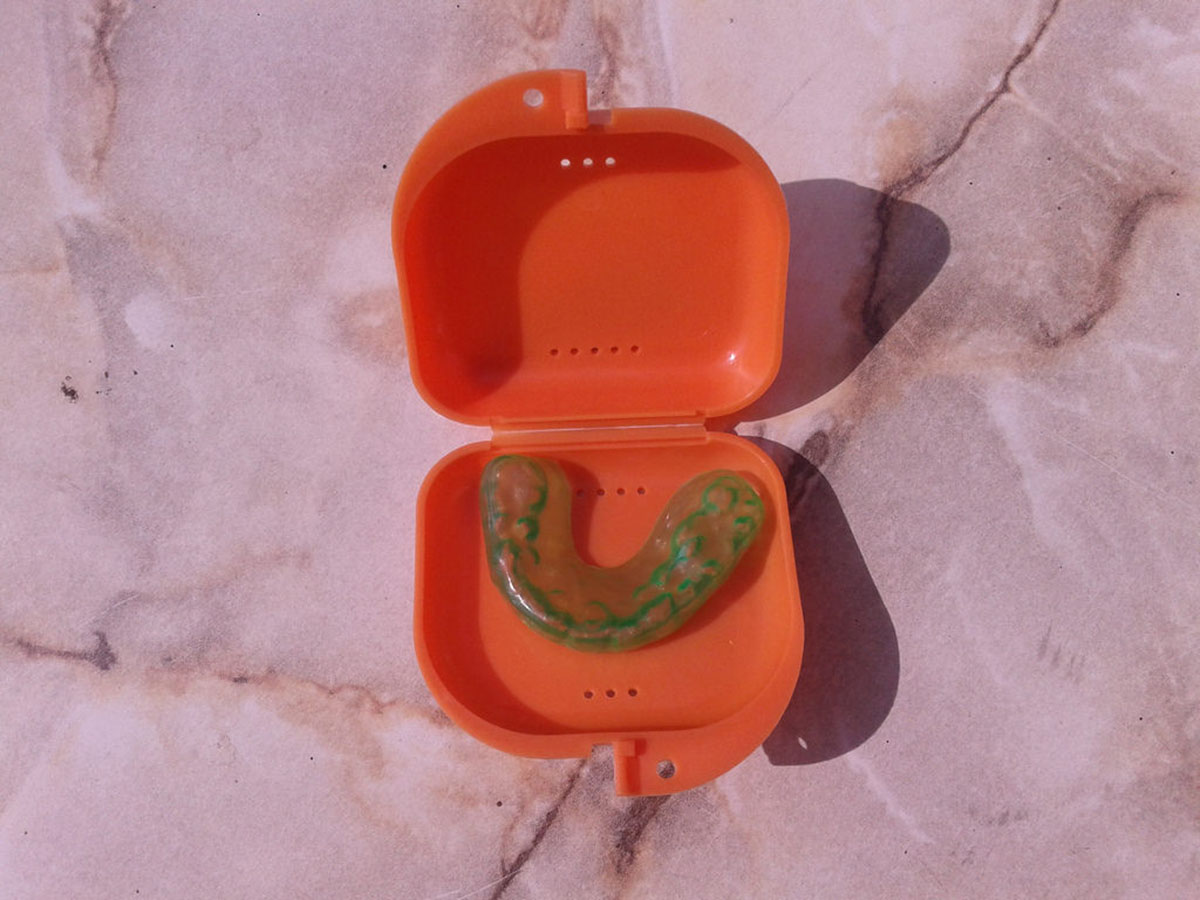Table of Contents
I look a bit like a boxer at night now, but at least I'll get to keep my teeth.
After my dentist diagnosed me with sleep bruxism, she recommended I use a mouth splint at night to prevent further damage to my teeth. The mouth splint. wasn't covered by insurance in my case, and I haven't received the bill yet, but online research leads me to believe that it will cost between $150 and $400. Your insurance may be different, and might just cover a mouth guard or splint for sleep bruxism.
What's the difference between a mouth guard and a splint, you may wonder? A splint is made out of inflexible hard plastic, while a guard is flexible. A splint is more durable, and more expensive. Regardless of whether you are getting a mouth guard or a splint for sleep bruxism, they'll do two things.

They even out the pressure across your jaw, and they physically cover your teeth so any grinding motions you do make will not damage them. You can indeed buy mouth guards (which look similar to the ones used by boxers) online or at pharmacies, but you want a custom-made mouth guard or splint for the best results. Custom-made so they fit the patient's teeth like a glove, which prevents them from slipping off your teeth at night.
Here's a brief description of the process I went through before getting my mouth splint:
- The dentist takes a cast of your upper and lower jaws. This takes about 10 minutes.
- Then, the casts are sent off to a technician, who will make the splint.
- You'll be invited back to your dentist's office to check whether the splint fits.
- If it does, you bring it home and start using it.
My dentist invited me to pick a color for my mouth splint. There were lots of choices, but she advised me to steer clear of transparent, because the splints do get dirty. As you can see in the pictures, I chose green.
I was dreading my first night sleeping with the mouth splint, especially it triggered my gag reflex the first time I put it in, as well as the next few times. I was awfully tired when I went to bed with it the first time. I did place an extra towel on my pillow case because my dentist had warned me about "surplus saliva excretion". I didn't drop off easily, but once I was asleep I woke up at my usual time. The mouth splint doesn't interfere with my sleep, then, but it does feel awkward while you're awake. Not as awkward as having stumps for teeth though, I think.
The mouth splint comes in a little box. My dentist advised me to put a little drop of dishwashing liquid into the guard, and then to brush it with a little toothbrush — not the tootbrush you use to brush your actual teeth. Then you rinse it thoroughly to prevent having a foul taste in your mouth when you go to sleep, and place it back in its box until you start using it.
Mouth guards and splints don't cure your sleep bruxism; they just prevent you from doing any damage to your teeth at night. They will have to be replaced occasionally, though their duration depends on how much grinding you do and what your particular guard or splint is like.
- Photo by Anna Schaap/SteadyHealth: www.flickr.com/photos/55485522@N06/21302012145
- Photo by Anna Schaap/SteadyHealth: www.flickr.com/photos/55485522@N06/21113954290


Your thoughts on this